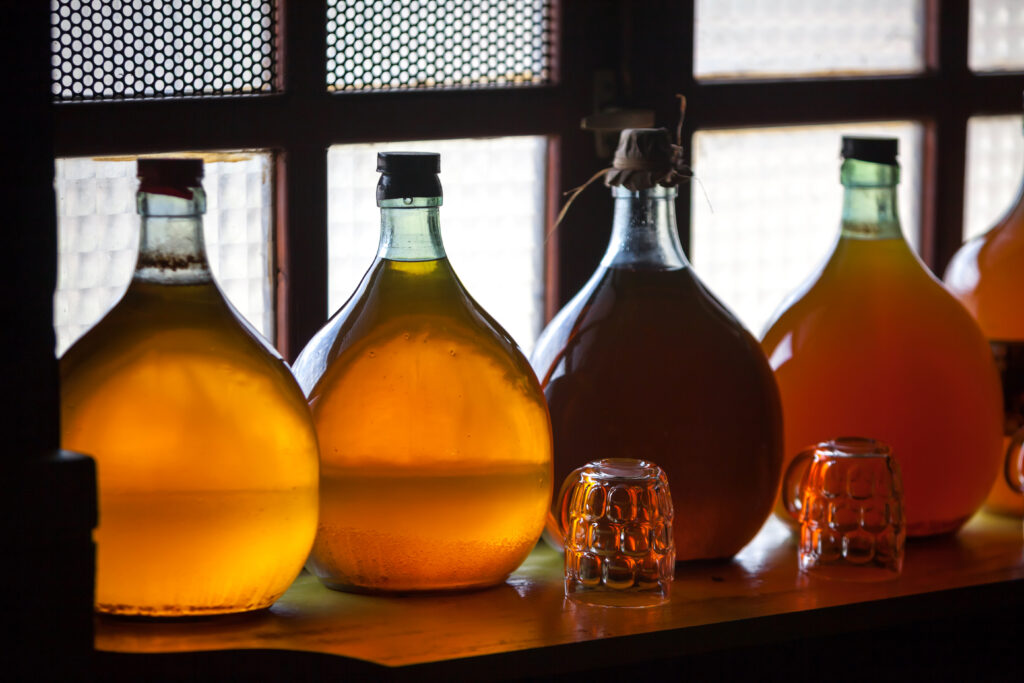What is Mead?

Mead is an alcoholic beverage made by fermenting honey with water, sometimes with added fruits, spices, grains, or hops. It’s considered one of the oldest known alcoholic drinks, with a history dating back thousands of years across many cultures, including the Vikings, ancient Greeks, Chinese, and various African peoples.
Basic Overview of Mead
- Main Ingredients: Honey, water, and yeast
- Alcohol Content: Typically 5%–20% ABV
- Flavor Profile: Varies widely; can be sweet, semi-sweet, dry, still, sparkling, or spiced
- Color: Ranges from pale gold to amber or even reddish, depending on ingredients
| What is Mead– Alcohol, Tobacco Tax, and Trade Bureau Definition Honey wine is classified under the Internal Revenue Code of 1986, as amended (IRC), as an “agricultural wine.” Agricultural wine is made from the fermentation of an agricultural product other than the juice of fruit. (See 27 CFR 24.10.) The production standards under 27 CFR part 24 for honey wine apply only to domestic products. The IRC does not allow for the use of coloring or flavoring materials (other than hops) in standard honey wine. Furthermore, wine spirits may not be added to standard honey wine, and standard honey wine may not contain more than 14 percent alcohol by volume. (See 26 U.S.C. 5387, 27 CFR 24.200 and 24.203, and HW14 for more information.) The IRC does provide for the production of wine specialty products that are made from a base of honey wine. These products are not standard agricultural wines but are instead classified under the IRC regulations as “other than standard” wines. (See 26 U.S.C. 5388(b) and 27 CFR 24.218.) |
Types of Mead
| Type | Description |
| Traditional Mead | Just honey, water, and yeast |
| Melomel | Mead with fruit added (e.g., berries, apples) |
| Metheglin | Mead with spices or herbs (e.g., cinnamon, cloves, ginger) |
| Cyser | Mead made with apple juice or cider |
| Pyment | Mead made with grapes or grape juice |
| Braggot | A blend of mead and beer (uses malt and hops) |
| Hydromel | A lighter, lower-alcohol mead (common in Europe) |
| Sack Mead | Stronger, sweeter mead with more honey per volume |
How Mead is Made
- Mixing (Must Creation): Honey is diluted in water to form the must.
- Fermentation: Yeast is added, converting sugars into alcohol over several weeks or months.
- Aging: After fermentation, mead is aged (sometimes for years) to develop flavor and clarity.
- Bottling: Still or sparkling, depending on carbonation level.
Mead’s Modern Popularity
Mead has seen a resurgence, thanks to craft beverage trends, historical interest (thanks to Vikings and fantasy fans), and the diversity of flavors possible. Meadery (a mead brewery) numbers are growing worldwide.
Mead’s Environmental Impact
The production of mead has a low environmental impact because of the low agricultural impact and support of pollinators.
- Low Agricultural Impact. Mead is made primarily from honey, which doesn’t require land-clearing, irrigation, or fertilization like grain (beer) or grapes (wine). Less reliance on large-scale monoculture crops.
- Supports Pollinators. Ethical mead production can support sustainable beekeeping, helping local bee populations thrive. Pollinators are crucial for biodiversity and food systems.
